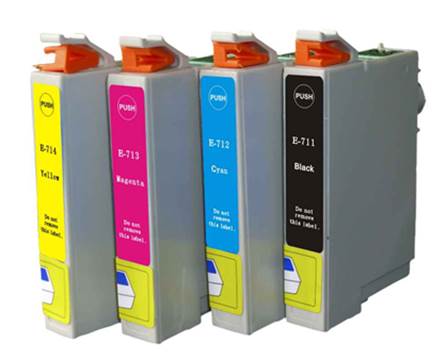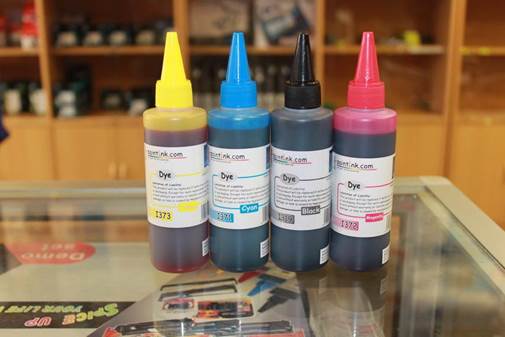Depending on its importance to your
business, a down printer could toss a wrench into a single project or bring
down the whole machine, causing everything to grind to a halt. It’s important
to make sure your inkjet printer runs reliably for a long time. You can do so
by performing simple maintenance tasks on a regular basis.

Replace
your empty ink cartridges with those recommended by your manufacturer
Cartridges care
Whenever your inkjet printer is due for one
or more new ink cartridges, make sure you replace the cartridge exactly as
described in the printer’s manual. If you don’t have the printer’s manual, find
it online, usually at the manufacturer’s Web site. It’s particularly important
to keep the old ink cartridges in the printer until you have the replacements
ready to install to avoid having dried ink plugging up the works.
The refill pitfalls
One of the biggest printer expenses is the
cost of replacing empty ink cartridges. Using a third-party vendor to refill
your old ink cartridges can save a lot of money, but there are several reasons
to be wary. Refilling an ink cartridge almost certainly voids the warranty of
the ink cartridge, and in some cases, using refilled ink cartridges can void
the warranty of the printer itself. Many printers also use special inks
designed to dry quickly and resist fading, and there may be no way to determine
if the ink refiller is using the same quality inks unless you buy the
manufacturer’s branded ink cartridges. Also, using manufacturer-recommended
paper can help avoid paper jams that could result in expensive maintenance
calls.
Keep it clean

If
you choose to use an ink refill system, make sure that doing so doesn’t void
your printer’s warranty
It’s a good idea to inspect and clean your
printer every time you replace the ink cartridges. If you have an all-in-one
unit with a scanner bed, clean the glass with a soft, dry, lint-free cloth.
Mild glass cleaner can be used if necessary, but make sure the unit is turned off
first and avoid using any abrasive or corrosive cleaners. Remove the paper
tray, and wipe it down with a clean, dry cloth. If you encounter problems with
the document feeder, then you may need to clean the rollers or other
paper-feeding components. Follow the manual’s instructions for cleaning these.
If prints come out streaked or smudged, you
may need to clean the printhead. Most inkjets have an automated process that
uses ink and plain white paper to clean the printhead, so consult your manual
to determine how to initiate a printhead cleaning.
Cool your inkjets
Every printer has a recommended or maximum
duty cycle, which tells you how many pages the printer can churn out per month
without unduly stressing its components. Although the maximum number is achievable,
you may need to upgrade to a more capable printer if you’re consistently
demanding the upper limit from your current inkjet.
Alignment

Most
inkjet printer software has an option (or two) that lets you clean the print heads
or nozzles
Most inkjet printers feature some sort of
automated print head alignment or print-quality improvement process. If images
or text looks skewed or jagged, consult your printer’s manual to find out how
to initiate the print head alignment process. Typically the process involves
printing a test page and examining the resulting patterns.
Know your warranty terms
If properly maintained, most inkjet
printers can function reliably for years without requiring more than the most
basic maintenance. That said, if your printer does begin malfunctioning,
quickly note whether it is still under warranty by checking the manual. (When
you bought the printer, you made sure to register it, right?) If it is still
under warranty, avoid performing any task that might void the warranty, such as
using third-party accessories or opening the case to repair the problem
yourself.
Immaculate inkjet
If the phrase “printer maintenance” sounds
daunting, don’t fret; anyone can perform the tasks listed here. And if you keep
up with it, your inkjet will continue to produce high-quality printouts for a
long time.